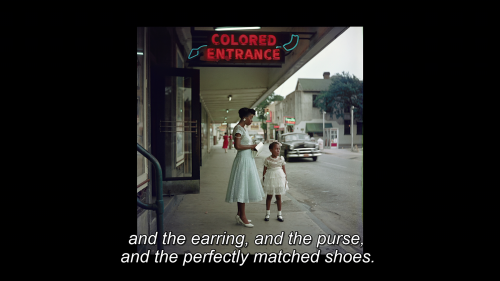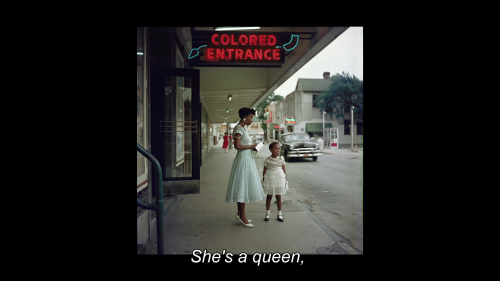#segregation
“An MP on motorcycle stands ready to answer all calls around his area. Columbus, Georgia,” 4/13/1942
Series: Photographs of American Military Activities, ca. 1918 - ca. 1981
Record Group 111: Records of the Office of the Chief Signal Officer, 1860 - 1985
Image description: A Black soldier sits on a motorcycle. He wears a service cap, holster, and tall boots with his uniform. A sign on the building behind him reads, “MILITARY POLICE / COLORED.”
Post link
War Department Pamphlet, Army Talk, Number 170 [cover and page 24], 4/12/1947
This pamphlet discusses the Army’s position on Black soldiers; answers from surveys about Black soldiers; and discussion of other minorities.
File Unit: Segregation in Armed Forces [1947-49], 1946 - 1953
Transcription:
WAR DEPARTMENT, WASHINGTON 25 D. C.
12 APRIL 1947
ARMY TALK
[handwritten note p29]
[illustration of Black troops performing mechanical work]
170
Note to Discussion Leader:
This ARMY TALK consists of three parts:
Part I - Negro Manpower in the Army
Part II - Negro Platoons in Composite Rifle Companies - World War II Style
Part III - What About Minorities?
This Talk is designed for discussion on three separate days as directed in section
V, WD Circular 76, 1947.
Before conducting the series, the discussion leader should read carefully section
V, WD Circular 76, 1947 and WD Circular 124, 1946, which are reprinted on the
last pages of this Talk. Circular 124, 1946, gives the general provisions of a revised
Army policy about the use, training, organization, and assignment of Negro personnel,
together with a reprint of the approved Gillem Board Report upon which
the revised policy is based.
In Part I of the Talk stress should be laid upon the threefold objective of the
policy:
1. An immediate objective - a more varied use of the Army’s Negro manpower
than has been peacetime practice hitherto.
2. An ultimate objective - the effective use of all available manpower, should
war come again, without regard to antecedent or race.
3. An over-all objective - increasing the effectiveness of the Army.
In all the Talks it should be borne in mind that the discussion of “race” is likely to
touch off sparks from individuals who have deep-seated beliefs, convictions, or
prejudices in one direction or another. Such discussions, however, may be handled
constructively if the group is kept aware that while differences in personal opinion
are to be expected and respected, the basic purpose of the Troop Information
Program is to bring information to troops and to develop understanding through
discussion.
These Talks, then, should inform troops about War Department policy and stimulate
discussion.
Part One
NEGRO MANPOWER IN THE ARMY
How to use its manpower best is always one of the Army’s problems.
How to use its Negro manpower best is in some respects a special
problem. It is of significance to the entire Army. To this special
problem several factors contribute:
(1) The “general run” of Negro soldiers have had considerably less
civilian schooling than the “general run” of white troops; they are
much less likely to have had civilian training and experience in highly
skilled mechanical fields; they make much lower scores on the Army
General Classification Test.
[sidebar] The most effective use of its
Negro personnel is of concern
to the Army.
WD Circular 124, 1946, and section V, WD Circular 76, 1947, appear on the last pages of this TALK
[page 2]
How did the Axis method work? It was simple. Get your victim to squabble with his friends instead of with his enemies. Play on his fears and resentments to make him hate groups of his own people. Start him quarreling at home. Break down his unity and strength. Thus you’ll weaken him so much that you can destroy him easily. It’s just an application of the old story of the bundle of twigs: when tied together they can’t be broken, but separately they are easy. United, they win; divided, they fall.
It’s no secret now that Hitler hoped to crack the United States wide open by driving wedges between the many groups on our population as he had done in some of the countries of Europe. It’s no secret that Japan tried to make the war in the Pacific a race war, with every person whose skin was “darker” united in a holy war against every person whose skin was white. That neither of these attempts got to first base in the United States or in our fighting forces means that in a time of national crisis the ideas that held us together as a nation were stronger than the differences that might have divided us.
Even at that, although , a public opinion poll made at the height of the war revealed that 85 percent of our population accused one or more of the following American groups of profiting selfishly from the war:
Farmers
Negroes
Jews
Foreigners
Protestants
Catholics
Business Men
Labor Leaders
Working People
That’s a pretty big list, isn’t it? How many Americans can you think of who don’t fall into one of those groups?
[sidebar] But the dangers of serious group antagonism are always with us.
And now that the fighting is over, now that we are trying to get back to peacetime status, and especially when the almost sure-to-come economic troubles begin to show up, the tendency to break up into groups, to point fingers, and to build up resentment against minorities can set in strongly without any pressure from the outside. We do not wish to use the Axis method on ourselves.
STOP How do scientists describe attitudes toward minorities?
[sidebar] A scientific view of group attitudes:
Not long ago a number of scientists at an American university, studying the matter of group attitudes, developed a chart they called “A Continuum of Relationships Among Human Groups." [superscript 1] For "Continuum” in this discussion we can substitute the word “scale.”
This scale or chart of how groups feel and act toward each other ranged all the way from persecution at the bottom of the scale to cooperation at the top. And on the way up it listed such attitudes and acts as discrimination, prejudice, preference, tolerance, and respect, in that order.
———————
[superscript 1] From The ABC’s of Scapegoating, published by the Central YMCA College, Chicago 6, Ill.
24
Post link
As soldiers returned from overseas after WWII, the question arose: should Black soldiers be segregated when aboard Navy vessels?
The Navy reiterated “ … no differentiation shall be made because of race or color.” 4/1/1947
File Unit: Navy Department, 1946 - 1947
Series: General Correspondence with Government Departments and Agencies Files, 1946 - 1947
Record Group 220: Records of Temporary Committees, Commissions, and Boards, 1893 - 2008
Transcription:
Navy Dept
[very faint round stamp]
April 1, 1947.
MEMORANDUM
TO: Mr. Robert K. Carr
FROM: Milton Stewart
The following statement of Navy policy on racial minorities was made binding on the whole service in an order of the Secretary of the Navy (Allnav-No. 423) on December 12, 1945. It was transmitted to me by phone by Capt. Stickney, of Planning and Control, the Bureau of Naval Personnel:
Attention of the Navy Department has been called to a recent incident in which a question arose concerning accommodations aboard naval vessels for Negro Army personnel returning to this country for demobilization. In order to avoid any future misunderstanding on this subject the Navy’s policy regarding various racial minorities is re-stated and summarized for information and guidance.
In the administration of naval personnel no differentiation shall be made because of race or color. This applies also to authorized personnel of all the armed services of this country aboard navy ships or at navy stations and activities.
In their attitude and day-to-day conduct of affairs naval officers and enlisted men shall adhere rigidly and impartially to naval regulations, in which no distinction is made between individuals wearing the navy uniform or the uniform of any of the armed services of the United States because of race or color.
(signed) JAMES FORRESTAL
Secretary of Navy
Post link
President George W. Bush Presents the Congressional Gold Medal to Dr. Roscoe Brown Jr., During Ceremonies Honoring the Tuskegee Airmen at the U.S. Capitol, 3/29/2007
Series: Photographs Related to the George W. Bush Administration, 1/20/2001 - 1/20/2009
Image description: President George W. Bush hands a display box with the Congressional Gold Medal in it to Dr. Brown. Several other Tuskegee Airmen look on, as does Laura Bush.
Post link
So look. I agree there should be more queer folks involved in the creation of media, particularly mainstream media. (Other groups too but I’m speaking on queer folks right now.) Queer people are underrepresented and shoved to the side and poorly portrayed and that sucks, and there should be more of us involved, particularly when it comes to telling our stories.
HOWEVER
Nothing good comes of the idea that ONLY queer folks should tell queer stories or portray queer characters, or that it’s okay to critique and harass straight folks purely for telling queer stories.
Why?
1. Segregation is not going to work in our favor. We know how “well make your own, then” plays out when the other group has the resources and institutional power. Especially if there’s no one even making them pay lip service to “separate but equal.” It’s not going to be any better if the segregation is self-imposed.
2. Saying straight folks can’t make queer media gives them a convenient excuse to simply not include any queer characters at all in the majority of stories, and I thought we hated that? I thought that was explicitly a bad thing? We WANT straight creators to be doing their best to write us well so we’ll be represented in a full range of mainstream media. Saying they can’t do it right and shouldn’t try lets them off the hook.
3. It puts closeted queer creators in a bind. Either they stay closeted and be harassed by angry queer folks, they come out and expose themselves to harassment from bigots, or they simply never tell queer stories, their own stories. The world gets worse for some subset of queer folks and fewer authentic queer stories get told. Net loss.
4.It makes the small pool of out queer creators the arbiters of queer narratives, which sucks for people who don’t see themselves well represented. There is no single definitive queer narrative and the smaller the pool of Approved Creators the more we risk instating a false one.
5. It opens the door to further divisions within the community. If a straight person can’t possibly understand a trans person well enough to write about or act them, can a cis gay person? So should a cis gay man ONLY write characters who are cis gay men? Ridiculous. No, all queer people are not alike and do not have the same experiences. So either we need to overcome that to learn about and empathize with other people and stand in solidarity, or we’re all going to splinter off into our own little bubbles which, again, is explicitly bad for both our real-life community and our fiction.
We want people to write about others who aren’t like them. We want people to write about others who aren’t like them. We also want people like us to have the opportunity to tell our stories but making it an exclusive privilege can only backfire.
Anti-communism is undeniably rooted in racism and colonialism. For what other reason would a reactionary oppose the liberation of the colonized proletariat and the natural progression of humanity? What funny logic do these bigoted white folks use to justify the forced captivity and migration of the African people to America, only to somehow act against the invisible hand of social progression of racial integration? A 21st century example of this photo are all the white republicans opposing the Asian and Chinese community in the United States as suspected agents of the Communist Party of China while happily accepting investments, commerce, and other economic benefits. At its core, the white anglo-saxon protestant is rotten, and must be reeducated in the upcoming proletarian revolution to build a successful multicultural society, similar to the USSR. Even the most exotic looking ethnic Mongolian was able to be treated as an equal to a Russian native in the glorious socialist republic.It is safe to say that the current ethnic relations in China are more progressive than the one of the stagnating American empire.
In the same exact year, fidel castro stated (as he always has throughout the entirety of his life and career) racism to be one of central and most important issues the new revolutionary government would tackle. even whilst he was in the partido ortodoxo (his political ideas were still pretty raw at that point), one of the key believes he held and campaigned for was racial equality.
“Castro’s government promised to get rid of racism in three years, despite Cuba’s violent history of colonialism. Though Cuba never had formal, state sanctioned segregation, privatization disenfranchised Cubans of color specifically.[12] Previously white only private pools, beaches, and schools were made public, free, and opened up to Cubans of all races and classes. Because much of the Afro-Cuban population on the island was impoverished before the revolution, they benefited widely from the policies for affordable housing, the literacy program, universal free education in general, and healthcare.[14] But above all, Castro insisted that the greatest obstacle for Cubans of color was access to employment. By the mid 1980s racial inequality on paper was virtually nonexistent. Cubans of color graduated at the same (or higher) rate as white Cubans. The races had an equal life expectancy and were equally represented in the professional arena.[12][15] Cuba, by 1980, had equal life expectancy rates of Black and white people, a stark contrast from the United States and Brazil who had large inequalities in terms of life expectancies. “
Post link
Toto, I don’t think we’re in Kansas anymore…
And we sure as Hell aren’t going back.
im praying for every gay and lesbain individual living in kansas. my heart goes out to all of you. and if you have no idea what i’m talking about, please read this.
THIS IS LITERALLY SOME 50s-STYLE SEGREGATION
HOW IS THIS ALLOWED TO HAPPEN
HOW ARE WE ALLOWING THIS
What. The FUCK? Seriously?
POLICE OFFICERS MAY REFUSE TO HELP
WHAT IN THE ACTUAL LIVING SHIT KANSAS???
BEAUTY AND THE BEACH (SEPIA DREAM SERIES}
A group of teens strike a pose for the camera at Missouri Avenue Beach (aka Chicken Bone Beach) , Atlantic City, NJ [1950s]. The only beach on the Jersey coast. open to African Americans. Photo Credit: John W. Mosley, . Atlantic City, NJ 1950s’
Black History Album, The Way We Were [Website|Tumblr|Pinterest|Facebook |Twitter ]
Post link
Between the years 1897 and 1922, the photographer Hugh Mangum set up makeshift studios across North Carolina and Virginia, where he invited black and white portrait subjects to share space together. In an era of racial terror and Jim Crow segregation, Mangum’s work acts as a record of shared experience in the face of racist American customs and laws.
Read the full story, and view more of these dynamic portraits, here.
Post link
“Harlem Jumped.” - African American artist Faith Ringgold
imagine - Faith Ringgold - Tell It Like It Is
Post link
Hidden Figures (2016)
Dir: Theodore Melfi
DOP: Mandy Walker
“So yes, they let women do some things at NASA, Mr. Johnson. And it’s not because we wear skirts. It’s because we wear glasses. Have a good day.”
Post link
Rosa Parks proved that sitting down can be a stand-up statement. While history may depict her famous refusal to get up from her bus seat as a spontaneous protest, this incredible woman had activist credentials that stretched well beyond. But, it was her famous 1955 act of civil disobedience that became a watershed event in civil rights activism and forever changed America for the better. It is for this uncompromising spirit in the face of repression that Rosa Parks takes her rightful seat in the Push Girl Hall of Fame.
Tell your friend she’s got a little Rosa Parks in her. Reblog now to give her a little push.
Post link
Experiencing the Bauhaus while Black…
Mr. Robert Reed an African American Painter from Yale School of Art, where he received an M.F.A. in 1962. Despite his highly decorative academic life his experimental work using the bauhaus theory had fell into Oblivion until now…
Reed was born in 1938. He had only recently graduated high school when the Brown v. Board of Education of Topeka ruling was announced (but still did not put an end to segregation in Charlottesville, instead resulting in Virginia Senator Henry Byrd’s “Massive Resistance” policy). Reed then experienced major culture shock after he graduated from Morgan State University, a historically Black college, and started pursuing his BFA at Yale. He grew up in a Black community in segregated Virginia, and his move to Connecticut meant that he, unlike African Americans who were born and raised in northern states, had to learn as an adult to navigate a seemingly integrated, but no less racist establishment. The studio became Reed’s safe haven for freedom to invent and play, and his geometric abstractions allowed him to explore color adventurously while simultaneously creating visual metaphors of his personal experiences. Reed’s paintings address his nimble navigation of a world in which color bore especially oppressive meanings, and they do so via a coded visual language in which colors represent institutions and locales through which he made his complicated way, from the segregation-era South into the halls of the Ivy League. And it was through the formal tools of abstraction he learned through his Bauhaus professors at Yale that provided Reed the visual language to “hide in plain sight.”
Read article here https://bit.ly/3bzJalU
ACCOLADES
His work has been exhibited in America and Europe and has been included in group exhibits at
The Whitney Museum inaugural exhibition “America Is Hard to See”,
Albright-Knox Art Gallery, the Biennial of the Whitney Museum of American Art, the Hirshhorn Museum
The Walker Art Center, the Minneapolis Institute of Art,
The Yale University Art Gallery.
His solo exhibits include:
The Whitney Museum of American Art,
The Bayly Museum in Charlottesville, Virginia.
The Washburn Gallery in New York, the McIntosh Gallery in Atlanta and the Yale School of Art.
The list goes on….
Reed also authored several intensive studio programs including ACRE, SIX-Summer in Experiment, and The Site Program. He was the founder and director of the Institute for Studio Studies, which was associated with the Yale Summer Session in Auvillar, France, from 2009 until his death in 2014.
Mr. Reed lectured extensively and taught at Skidmore College in 1964 and the Minneapolis College of Art and Design, where he was head of the Foundation Studies Division. He was appointed to the Yale School of Art faculty in 1969 where he served for nearly 45 years as professor of painting/printmaking. He held several appointments as director of undergraduate studies in art at Yale starting in 1969 and also served as director of graduate studies in painting. From 1970 to 1975 he directed the art division of the Yale Summer School of Music and Art at Norfolk, Connecticut.
Reed was a National Council of Arts . He was awarded a grant from the National Endowment for the Arts. He was a recipient of the 2004 National Council of Art Administrators Distinguished Teaching of Art Award from the College Art Association, and was elected in 2009 to the National Academy Fellows in New York. He was awarded an honorary Doctor of Fine Arts degree from the Minneapolis College of Art and Design. He served as a board member for the McDowell Colony, the Virginia Center for Creative Arts, The Silvermine Guild Center for the Arts, Second Street Gallery and the Lyme Academy of Art.
Reed received numerous awards including the National Council of Arts Administrators, the College Art Association’s Distinguished teaching award, the William DeVane teaching award, National Academy Fellow and was a recipient of a grant from the National Endowment for the Arts.
Post link
On This Day In History
May 17th, 1954: Brown v. Board of Education of Topeka, Kansas. A unanimous decision by the Supreme Court of the United States outlaws racial segregation in public schools.
A protocol for #rehabilitation is necessary but more importantly a fair #justice system:
http://palestineremix.com/beyond-the-walls.html
| #prisonreform | #justice | #humanityfirst | #palestine | #humanity | #segregation |
https://www.instagram.com/p/CeUYfqiuTXb/?igshid=NGJjMDIxMWI=
Post link
2022 … beyond the wall:
http://palestineremix.com/beyond-the-walls.html
| #eastjerusalem | #westjerusalem | #palestine | #Jerusalem | #segregation | #racism | #prisonreform | #humanityfirst | #humanity | #palestine | #israel
https://www.instagram.com/p/CeUYEKbuKW-/?igshid=NGJjMDIxMWI=
Post link
On February 3, 1964, the Rev. Milton Galamison led the largest student boycott in the history of the New York City public school system, with 464,361 students staying home to fight for the end of school segregation.
(viaUntapped Cities)
Post link
Sweatpants & History | Rosa Parks and Her Lifetime of Activism
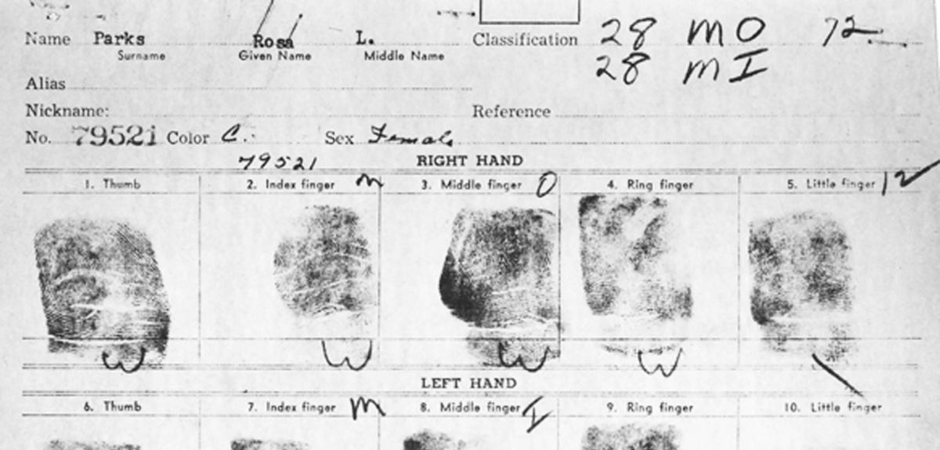
Today, on what would have been her 104th birthday, Rosa Parks’ contribution to the Civil Rights Movement is honored—in two states: California and Missouri (Ohio and Oregon observe Rosa Parks Day on December 1, the anniversary of her arrest). Only four out of fifty states have proclaimed a day to honor the woman often dubbed “the first lady of civil rights.” Aside from being a missed opportunity…


![War Department Pamphlet, Army Talk, Number 170 [cover and page 24], 4/12/1947This pamphlet discusses War Department Pamphlet, Army Talk, Number 170 [cover and page 24], 4/12/1947This pamphlet discusses](https://64.media.tumblr.com/a008781338adc9cdedd215ae00881eea/d166b24b0c160c9c-de/s500x750/03bff5cbf3522f7b7a67eb2374cf488d2118955b.png)
![War Department Pamphlet, Army Talk, Number 170 [cover and page 24], 4/12/1947This pamphlet discusses War Department Pamphlet, Army Talk, Number 170 [cover and page 24], 4/12/1947This pamphlet discusses](https://64.media.tumblr.com/ed92bfa5cd526e6240e8f722bcccbc45/d166b24b0c160c9c-02/s500x750/b39d14f69dccfef37e414189a5041215c189292d.png)



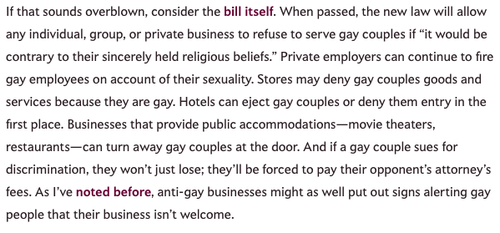


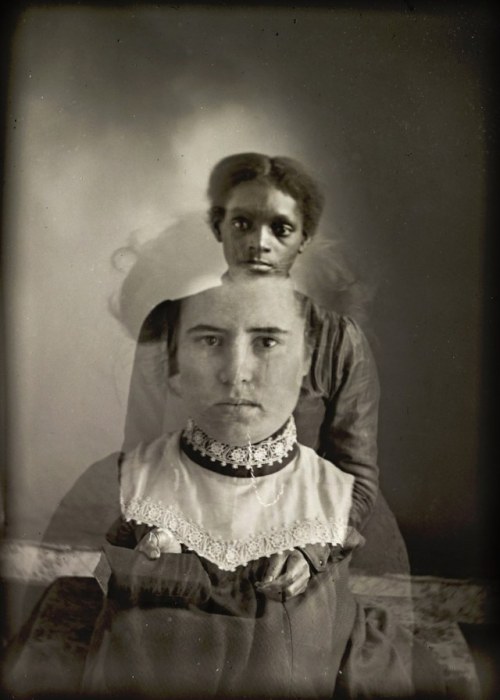
























![واجب [Wajib - The Wedding Invitation] (Annemarie Jacir - 2017) واجب [Wajib - The Wedding Invitation] (Annemarie Jacir - 2017)](https://64.media.tumblr.com/3b891fef7e6d9c851cfcb9184b4f3824/85a91aa36ca15f2e-1b/s500x750/dd6a89403e296ef57d484a8c6a4cde2c70b2f92d.jpg)
![واجب [Wajib - The Wedding Invitation] (Annemarie Jacir - 2017) واجب [Wajib - The Wedding Invitation] (Annemarie Jacir - 2017)](https://64.media.tumblr.com/f20fb1ff402e8605b5e0c5dab8588dd7/85a91aa36ca15f2e-a8/s500x750/2e8184e99d7bbbdf5d28d5a4cb64c4641e028dd0.jpg)
![واجب [Wajib - The Wedding Invitation] (Annemarie Jacir - 2017) واجب [Wajib - The Wedding Invitation] (Annemarie Jacir - 2017)](https://64.media.tumblr.com/24a31ecf2cbc00ef4c974d8904d9937a/85a91aa36ca15f2e-83/s500x750/e1331cf3b138634d1a99c6f4f542b0d51969171a.jpg)

